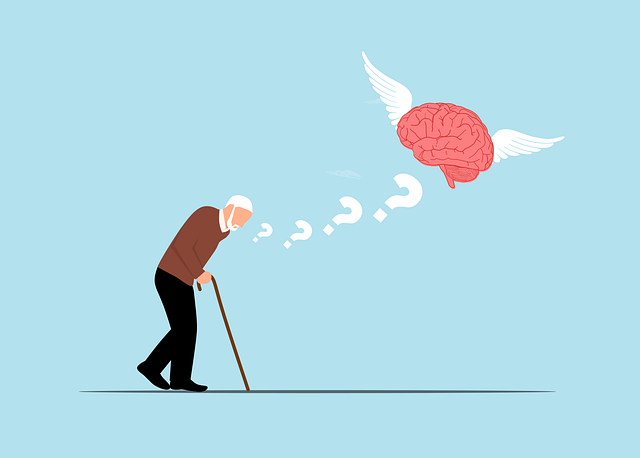Healthcare provider burnout is a pressing issue exacerbated by unaddressed Centennial Adjustment Disorder (CAD). CAD hinders individuals from adjusting to stressful situations, leading to chronic distress and decreased functioning. Prevention strategies focus on self-care, stress management, and confidence building through exercises like mindfulness meditation and professional counseling, such as Centennial Adjustment Disorder Therapy. Organizations can mitigate burnout by implementing work-life balance policies, flexible scheduling, clear role definitions, open communication, and self-esteem improvement initiatives.
Healthcare provider burnout is a growing concern, with high-stress work environments contributing to physical and emotional exhaustion. This article explores strategies to prevent burnout, focusing on self-care practices and professional support. We delve into the concept of Centennial Adjustment Disorder, highlighting its relevance in understanding long-term stress responses. Additionally, organizational changes and promoting work-life balance are discussed as essential components for creating a sustainable healthcare practice. Discover practical approaches to mitigate burnout and enhance well-being through comprehensive strategies, including Centennial Adjustment Disorder therapy.
- Recognizing Burnout: Understanding Centennial Adjustment Disorder
- Strategies for Prevention: Self-Care and Professional Support
- Creating a Sustainable Practice: Organizational Changes and Work-Life Balance
Recognizing Burnout: Understanding Centennial Adjustment Disorder

Burnout is a state of emotional, physical, and mental exhaustion caused by prolonged or excessive stress. For healthcare providers, it’s a significant concern due to the demanding nature of their work. Recognizing burnout early is crucial for implementing effective prevention strategies. One often-overlooked aspect of this is understanding Centennial Adjustment Disorder (CAD). CAD is a psychological condition characterized by an individual’s inability to adjust to stressful situations, leading to prolonged feelings of distress and decreased functioning.
Healthcare professionals, despite their resilience, can develop CAD if they consistently experience high-stress environments without adequate support or coping mechanisms. Self-awareness exercises, stress management techniques, and confidence-boosting activities are essential tools in the prevention arsenal. Through therapy focusing on these areas, providers can learn to identify signs of burnout early, adapt their work routines, and maintain a healthier balance between personal and professional life.
Strategies for Prevention: Self-Care and Professional Support

Healthcare provider burnout is a growing concern, but there are effective prevention strategies that focus on self-care and professional support. Encouraging healthcare professionals to prioritize their mental wellness through regular exercise, balanced diets, and sufficient sleep can significantly reduce stress levels and enhance resilience. Practicing mindfulness meditation has also been shown to be beneficial for managing work-related pressures and improving overall mental health. This involves training the mind to be fully present in the moment, thereby increasing awareness and reducing reactivity to stressful situations.
Additionally, providing access to professional counseling services, including Centennial Adjustment Disorder Therapy, can offer much-needed support. Such therapies help healthcare providers process and manage their emotions, develop coping strategies, and enhance their problem-solving abilities. Moreover, integrating Mental Health Policy Analysis and Advocacy into workplace culture promotes a supportive environment, ensuring that staff have the resources they need to thrive.
Creating a Sustainable Practice: Organizational Changes and Work-Life Balance

In the pursuit of preventing healthcare provider burnout, creating a sustainable practice involves profound organizational changes and prioritizing work-life balance. Healthcare organizations can foster a supportive environment by implementing policies that promote reasonable patient loads, flexible scheduling, and clear roles and responsibilities. These adjustments are crucial in mitigating the risk of Centennial Adjustment Disorder Therapy (CADT), which often arises from prolonged exposure to high-stress situations without adequate coping mechanisms.
Effective communication strategies play a pivotal role in this transition. Open dialogue between providers, administrators, and support staff can help identify workload issues early on, allowing for prompt adjustments. Additionally, integrating self-esteem improvement initiatives and mind over matter principles can empower healthcare professionals to better manage stress and maintain resilience. By embracing these holistic approaches, healthcare organizations can not only prevent burnout but also enhance the overall well-being and job satisfaction of their staff.
Healthcare provider burnout is a significant concern, but with the right strategies, it can be mitigated. By recognizing the signs of Centennial Adjustment Disorder and understanding its impact, professionals can proactively manage their well-being. Implementing self-care practices and seeking professional support through therapy are essential steps. Additionally, organizational changes that promote work-life balance can create a more sustainable healthcare practice. Integrating these strategies ensures healthcare providers can continue to deliver quality care while maintaining their mental health and overall satisfaction in the profession.














